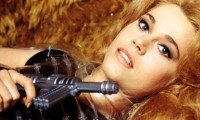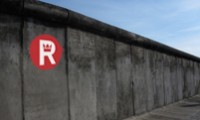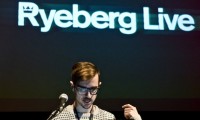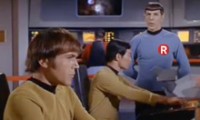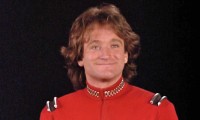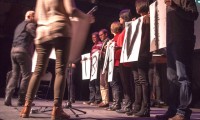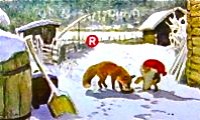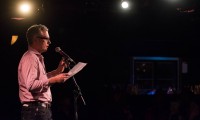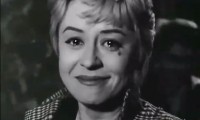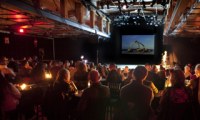You remember the pre-Internet age. Have a look at the pre-motion picture age.
Ryeberg, “Ryeberg Home Movie: Fotoplastikon, Warsaw” (2012)
By the time this particular Fotoplastikon (or “Kaiser-Panorama“) was set up at 51 Jerusalem Ave., Warsaw, the “living photographs” of the Lumiere Brothers had been touring the world for almost a decade. The year was 1905. It wouldn’t be long before the 25 people who’d pay to sit around the Fotoplastikon were sitting side by side in a darkened cinema. But for the latter half of the nineteenth century, there was only one way to see faraway places and faces — through viewfinders like these.
Today we carry our Fotoplastikons in our pockets (they just happen to double as telephones and a dozen other tools…). Ryeberg proclaims this home movie playlist a Videoplastikon (once again, Hail YouTube!), and Ryeberg would like to invite August Fuhrmann, inventor of the Fotoplastikon, to consider the following video and see if he can figure out what he is seeing, and how.
Ryeberg, “Ryeberg Home Movie HD: Rainbow Circle, Italy” (2013)
Well: That silver platform is the wing of a flying machine, known as an “aeroplane.” The flying machine is carrying a cargo of passengers to Rome — Fiumicino to be exact (which is an “aeroport” — that’s where aeroplanes are parked). The moving images were captured through the glass opening of a small, palm-sized black box and then recorded onto a tiny data storage device and subsequently uploaded into a global system of interconnected… Ah! Maybe it’s all a little too complicated, even for an inventor.
Onwards to the next video slide. While in Italy, Ryeberg sometimes heads to Mantua, home turf of poet Virgil. Here’s something that would have been around in Fuhrmann’s day: A Bersaglieri fanfara band — unmistakable with their wide-brimmed hats and black Wood Grouse feathers — playing a bright and rousing musical number.
Ryeberg, “Ryeberg Home Movie HD: Bersaglieri In Mantova, Italy” (2013)
The Bersaglieri are perhaps not what they used to be. No matter. Our Videoplastikon leads us to Budapest… In 1873, Buda and Pest become one. Public street lights are put up throughout the newly expanded city centre. In the City Park, a mining engineer named Zsigmondy Vilmos bores deep into the ground, 1256 metres, to where the temperature is 77 °C. Hot water springs up, and on that spot the Széchenyi Thermal Baths will eventually appear.
Ryeberg, “Ryeberg Home Movie HD: Széchenyi Baths, Budapest” (2012)
Today that Széchenyi spring pushes up 6,000,000 litres of water a day, water rich with calcium, magnesium, hydro-carbonate, sodium, sulphate, fluoride and metaboric acid. Russian gangsters, like Snow Monkeys, soak in it for hours, summer or winter.
Apparently, this Count István Széchenyi de Sárvár-Felsővidék was a big-shot businessman/statesmen who had a hand in beautifying Budapest as well as promoting the Magyar language abroad. He also helped reform Hungary’s outmoded feudal class structure: His book “Credit” (“Hitel” in Hungarian) argued that the people should be able to buy land and hold mortgages, and “Light” (“Világ“) set out a whole program of economic reform that included the abolition of tax exemptions for nobles. It’s said that the Count battled depression all his life. He committed suicide in 1860. See his face on the 5000 Forint bank note.
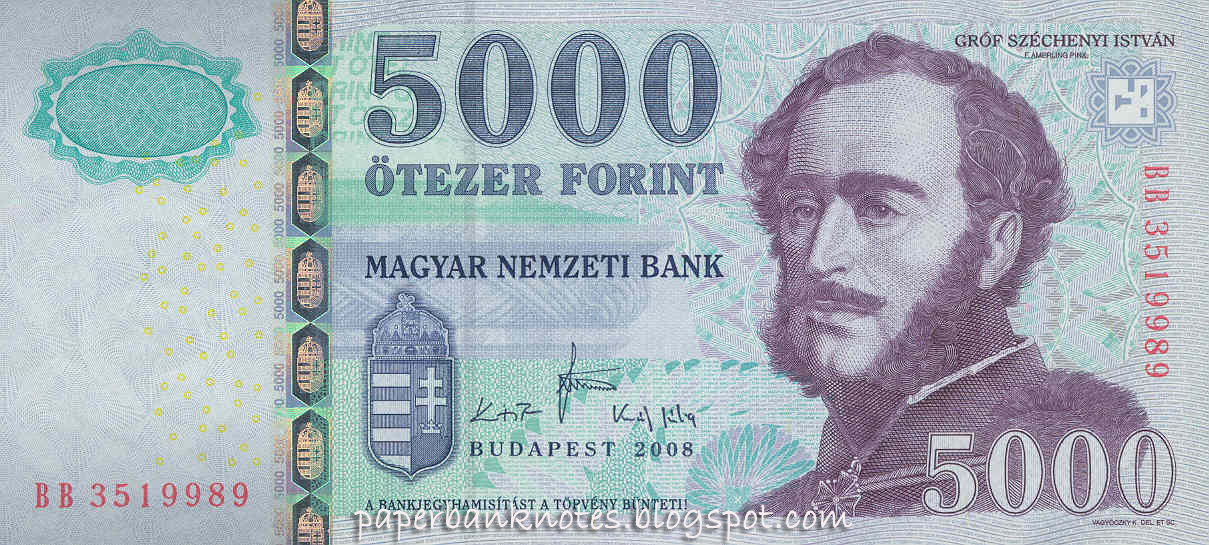
Some of the trains leaving Budapest’s Keleti Station look like leftovers from the nineteenth century. Ryeberg took a ride to Franz Josef Station in Prague (built 1871) via Bratislava and Brno — with all the windows open! Along the way, conductors called ahead to arrange a police reception at one stop for a couple of drunks who were staggering from compartment to compartment, bez lístků.
Ryeberg, “Ryeberg Home Movie HD: Pest To Prague By Train” (2012)
Arrival in Praha under rainy skies. Straight to the National Theatre Ballet. The theatre opened in the 1880s, a decade before Tchaikovsky’s ballet — you know which one — premiered in St. Petersburg. These days the lieu and the ballet are frequently reunited. Here Prince Siegfried and Princess Odette take their final bows.
Ryeberg, “Ryeberg Home Movie HD: Final Curtain, Prague National Ballet” (2012)
Elsewhere in the 1880s, a dreamy Theodore Roosevelt is ranching in the Western end of North Dakota, near Medora. He is hugely impressed by the wild horses: “In a great many — indeed, in most — localities there are wild horses to be found, which, although invariably of domestic descent, being either themselves runaways from some ranch or Indian outfit, or else claiming such for their sires and dams, yet are quite as wild as the antelope on whose domain they have intruded.”
In those same localities — today called “Theodore Roosevelt Park” — you can still spot wild, free-roaming horses. In fact, horses occupied these grassy plains as far back as the Pleistocene epoch, well before the Spanish reintroduced the beautiful beasts in the 16th century.
Ryeberg, “Ryeberg Home Movie: Wild Horses, Theodore Roosevelt Park, ND” (2013)
Many of the horses in the park resemble the types of horses depicted in 19th century drawings and paintings: Large-headed, short-backed, and a bit larger than the mustang of the southern Plains. They often have white faces and patches of white on their sides. This color pattern, called an “apron,” is common in the paintings of Frederic Remington and C.M. Russell, but is seldom seen in most modern horses. So says the National Park Service.
Roosevelt was deeply marked by his time in the Dakotas. As President, he set up preserves and parks and bird reservations, as well as the U.S. Forest Service. He said: “We have become great because of the lavish use of our resources. But the time has come to inquire seriously what will happen when our forests are gone, when the coal, the iron, the oil, and the gas are exhausted, when the soils have still further impoverished and washed into the streams, polluting the rivers, denuding the fields and obstructing navigation… Here in the United States we turn our rivers and streams into sewers and dumping-grounds, we pollute the air, we destroy forests, and exterminate fishes, birds and mammals — not to speak of vulgarizing charming landscapes with hideous advertisements…”
Words that could have been written yesterday. One suspects President Roosevelt would have stood in the way of hydraulic fracturing. Ah, to have the Earth back, as it was circa 1900, with all its bountiful oceans and vast forests and big, healthy ice caps. President Roosevelt continues to peer down at us, in form, if not in spirit. So does Dad, always.
Ryeberg, “Ryeberg Home Movie: Off The Path, Mt. Rushmore, SD” (2013)
“Get. Back. Up. On. The. Path. Right. Now.” Ryeberg might have objected to this particular statement of command. Then again, Eeny, Meeny, Miny, and Moe probably were trying to take off…
While Roosevelt lamented the destruction of the American wilds, in France, President Napoleon III had for decades been reshaping the French landscape with enormous infrastructure projects. He designed parks and refashioned cities and laid down railway networks. He planted a whole lot of trees as well, over 600,000. Along the main roads, plane trees now provided lovely shade for horses and marching troops. All these years later, they are deadly obstacles for car drivers. La Route D’Orgon, No. 99, heading west towards Saint-Rémy-de-Provence, is case in point.
Ryeberg, “Tunnel Of Trees, Saint-Rémy-de-Provence, France” (2013)
The Videoplastikon takes us anywhere and anytime, and yet we only see to the limits of our own headlights. During his reign, Napoleon III had every city hall in France decorated with stone busts of himself. But then, four years after his death in 1877, these were replaced with the busty busts of Marianne, allegorical figure — post Revolution — of la République Francaise. In 1883, she appeared in colossal form on the Place de la République. She’s got her Phrygian cap and leafy crown (standard issue symbols of liberty and peace). She’s got a sword slung over her shoulder (en garde!). She holds aloft an olive branch, and clutches a stone tablet that reads, “Droits de l’Homme.” She’s all set… to recall to us our own past hopes and desires, while we play in the world that’s left behind.
Ryeberg, “Face Plant & Fan Dance, Place de la République” (2013)
*Click here to read more about Ryeberg home movies.

